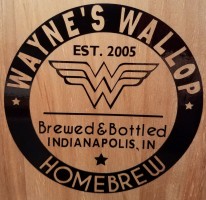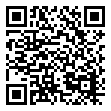Brew Log History
Target 68°F
Ambient: {{ stats.ambient | number:0 }} °F
OG: {{ stats.ogGravity | number:3 }}
Attenuation: {{ stats.attenuation | number:2 }}%
Calories: {{ stats.calories | number:1 }} / 12oz
Carbs: {{ stats.carbs | number:1 }} g / 12oz
Readings: {{ readingsCount | number }}
{{ formatHeaderDate(dates.navStart) | date:'mediumDate' }} to {{ formatHeaderDate(dates.navEnd) | date:'mediumDate' }}
Last Updated: {{ stats.lastupdated.ago }} from {{ stats.lastupdated.source }}
Hops
|
Amount
|
Variety
|
Cost
|
Type
|
AA
|
Use
|
Time
|
IBU
|
Bill %
|
|
1 oz |
Willamette1 oz Willamette Hops |
|
Pellet |
4.5 |
Boil
|
0 min |
|
100% |
|
1 oz
/ $ 0.00
|
Hops Summary
|
Amount
|
Variety
|
Cost
|
IBU
|
Bill %
|
|
1 oz |
Willamette (Pellet) 0.99999999771257 oz Willamette (Pellet) Hops |
|
|
100% |
|
1 oz
/ $ 0.00
|
Target Water Profile
Meijer Spring Water 2017
| Ca+2 |
Mg+2 |
Na+ |
Cl- |
SO4-2 |
HCO3- |
|
71 |
26 |
8 |
17 |
30 |
260 |
Notes
Directions
1) Take 2.5 gallons of water heat up to 150. Turn off heat and put grains in steeping bag. Steep for 20-30min.
2) Take grains out, put in malt extract. Bring to boil.
3) At the beginning of the boil, add 1 oz of Willamette hops.
4) Boil for 60 min. Turn off heat, pour 6 oz of maple syrup and cool down (that should be half of the maple syrup in the package). It’s okay to eye ball it. Just look at half of the bottle.
.
5) After it is cooled down, put into fermenter and fill up to 5 gallons. Pitch yeast
6) Let the amber ferment for 1-2 weeks. Then its time to bottle. As you can see I have marked my maple syrup so anyone who comes over to my house will not use the left over 6 oz of maple syrup.
7) For bottling use the other 6 oz of maple syrup as your priming sugar. To do that, take about a cup of water, put in sauce pan bring to boil, then add the 6 oz of maple syrup and heat up for about a min. Turn off the heat, and let it cool down. Take that mixture and pour into bottling bucket, then siphon beer on top of the mixture, stir around then bottle.
*If kegging pour that mixture into the bottom of your keg. Purge your keg, but don’t pressurize other then the inital to fill up the head space. Let it sit for a bit of a week. You might have to adjust the carbonation level.
8) Drink in about 2-3 weeks.
The reason why I do things the way I do:
Combination of 3lbs of Amber and 3 lbs of Golden light
The reason why I chose this combination is that I really want to bring out sweet tones in the brew. Amber malt extract is created from crystal malt and 2 row brewers malt. When converting amber malt extract into all grain recipes you actually look at it as 95% 2 row and 5% crystal malt (60L or 80L depending on your school of thought). I really wanted to accent on the sweetness of the maple syrup. I knew when making the recipe that I was going to add crystal malts to the recipe so I only added 3 lbs of the amber malt extract because I didn’t want a crystal malt overload. Having this balance between 3 lbs of amber and 3 lbs of golden light will allow room to add different speciality grains which help in adding complexity to the beer.
.5 lbs of CaraVienna.
Odd grain to chose right? Not used in a ton of recipes, used in this one! I like this grain a lot. Cara just means caramel. It’s a weird abreviation that home brewers use. Caravienna malt adds sweetness and body to this beer. It will add a bit of color, not a lot though since its only 20-24L. This grain does add a very light nutty sweetness to the beer which is hard to substitute. Substitutes for this could be 20L crystal malt but it would lack the nutty aspect. CaraVienna does have a nice aroma also, kinda bready in my opinion.
.5 lbs of Crystal 40L
Between all of the crystal malts, I really enjoy crystal 40L and crystal 60L. I honestly don’t have too big of a reason other then that’s normally what all my recipes will have in them when I end up using crsytal malt. Normally at home brew shops they’ll have: 20L, 40L, 60L, 80L, & 120L . So 40L crystal malt is on the lower spectrum of the crystal malts. When you get into the higher crystals they have almost a raisin like flavor to them. I wanted to stay away from that flavor in this beer (it’s good for stouts and porters) so I used 40L, if you couldn’t get 40L I would go with 20L or 60L but not anything higher then 60L. If you go higher in the crystal malts you might end up covering up the maple syrup.
.5 lbs cara pils.
This grain balances the beer without adding any color. Also this grain is great for head retention which is defintly what we want for a beer like this.
1 oz Willamette Hops 60 min boil
No aroma hops in this beer. I didn’t want aroma hops because the maple syrup is the main thing that is the focus point. Having hops in the aroma I think could take away from the maple syrup. Willamette are kinda woody in profile as well as a bit spicy. I figure keep earth (woody) with earth (maple syrup from trees). This type of hop is a lower alpha hop generally around 4.5%. If you wanted to add an aroma hop I would stay as low as possible for the alpha. Examples would be: Liberty – 3.4% or Crystal – 2.8%. I would not go to high on the alpha because you’ll cover up the maple syrup.
Maple Syrup For Flame Out & In Bottling Process
I like to use both Maple Syrup at the end of the boil and also in the bottling process. I don’t like to boil it for too long because I just feel that it loses some of the essence of the Maple syrup. When you use Maple syrup for bottling you’ll be able to smell it when you open the bottles. Kinda reminds me of pancakes when you open the bottle.
I would suggest to let the beer age in the bottles for about 2-3 weeks. If you ended up wanting to add more maple syrup or adding more in the fermentation process you should defiantly let it stay in the bottles for more then 2-3 weeks. If not, the beer might taste hot.
Safale – 04 or White labs 002 or White Labs 013 or White labs 023.
I like Safale 04 for this recipe. It leaves more residual sugars meaning that the beer will be sweeter. Now that is what I’m talking about! If you chose a stronger yeast then what will happen is that most of the sugars will just be converted into alcohol, making the beers ABV pretty high up there. If that’s what your going for, then leave it in the bottles for more then 2-3 weeks. The other white labs that I have listed above will also give a similar effect as the Safale -04. I would not use WLP001 on this one.
Conclusion:
It’s good, it’s different, and worthy of a repeat beer for next year. I particuarlly like this beer because it’s nice to drink when the weather starts to change and leaves you with this refreshing taste in your mouth. The hops are going to be on the light side, if that’s a bit of a turn off to you this may not be the beer for you. You could add another ounce with 30 left in the boil but I wouldn’t want to do to much more (as in ounces) then that because it will just take away from the maple syrup smell. Also I wouldn’t put hops in to much past 30 min because it will add to much aroma. I would not put to much of any hop in this beer because I wouldn’t want my palate to be in shock.
The thing that I like most about the amber is that you are starting off with a beer that is already sweet, to build off of that I feel is not that hard. So in my opinion the 8 Steps Maple Syrup Amber is a great transition beer into the fall.
If you think that I’m being particularly up tight with the Maple Syrup and afraid of “taking away from it” let me explain. I figure that this beer has one purpose, maple syrup. If you take that away from it, it’s just like any amber. So when I’m telling my friends, “Hey try my Maple Syrup Amber” the only reaction I want is, “I CAN TASTE THE MAPLE SYRUP! NOW THAT’S COOL”. A response such as, “I can’t taste it.” or “It’s pretty hoppy” would be a failure for what I was going after . With that said, feel free to take from it, build off of it, or leave it, in my opinion this beer will set you up for some great reactions with friends and family though.

Last Updated and Sharing

- Public: Yup, Shared
- Last Updated: 2018-02-04 16:17 UTC
For quick copying and pasting to a text based forum or email.
Click the Download as HTML file button below.
Recipe costs can be adjusted by changing the batch size. They won't be saved but will give you an idea of costs if your final yield was different.
|
Cost $ |
Cost % |
| Fermentables |
$ |
|
Steeping Grains
(Extract Only) |
$ |
|
| Hops |
$ |
|
| Yeast |
$ |
|
| Other |
$ |
|
| Cost Per Barrel |
$ 0.00 |
|
| Cost Per Pint |
$ 0.00 |
|
| Total Cost |
$ 0.00 |
|
Discussion about this recipe:





